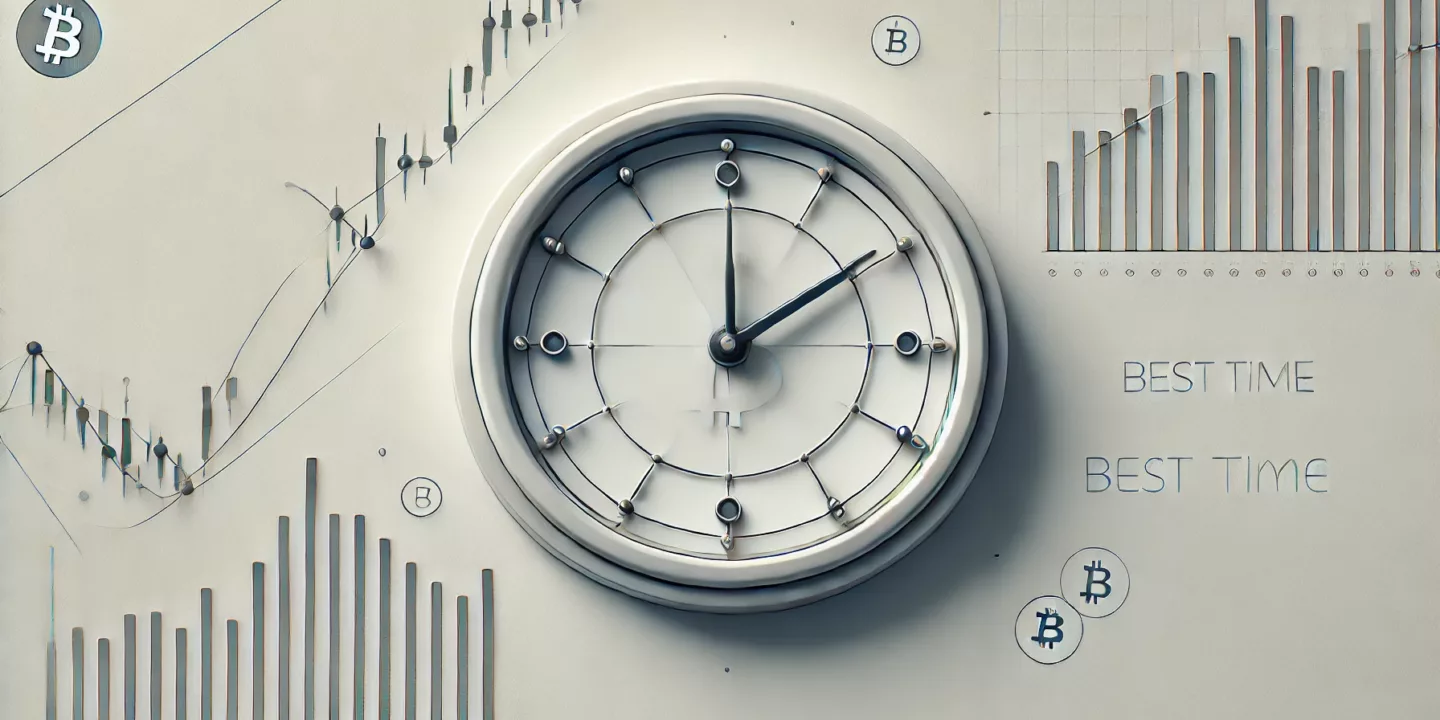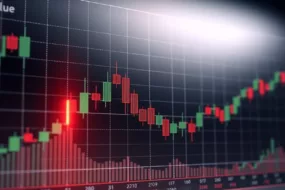
For traders, the greatest achievement is timing the market. It refers to accurately predicting market movements and placing trades in the direction of the trend, resulting in significant profits. In the 24/7 accessible crypto market, determining the optimal entry time and the ideal holding duration for digital assets poses a challenge. This article will explore various factors influencing the choice of timeframes and highlight best time to trade in crypto markets.
Factors Influencing the Continuous Crypto Trading Availability
1. Decentralisation
The entire crypto market is decentralized. That means it is not tied to a specific physical location or operating hours. Transactions are peer-to-peer and facilitated by blockchain technology, which allows trading to happen around the clock.
2. Global Participation
Anyone with the internet can access and use cryptocurrencies. This global participation ensures there is always someone to trade with, no matter the time of day.
3. Automated Trading
Many crypto traders use automated trading systems or bots. These bots can operate continuously and execute trades based on predefined algorithms even when human traders are asleep.
4. Market Demand
The demand for continuous trading availability is high in the crypto space. Many traders and investors appreciate the ability to react to market news and changes instantly without waiting for markets to open.
5. Innovative Financial Products
The crypto market offers various unique financial products, like DeFi (Decentralised Finance), which operates 24/7. These products provide multiple services, such as lending, borrowing, and yield farming, and are accessible anytime.
Factors Affecting Crypto Trading Time Frames
Like any other tradable securities, many factors detailed below affect crypto trading time frames.
1. Volatility
Volatility describes how quickly the price of a cryptocurrency rises or falls within a certain period. High volatility means a crypto’s price moves dramatically over a short period. Traders with a high-risk tolerance prefer higher volatility periods and trade in shorter time frames, like day trading. The aim is to capitalise on the price swings and make quick profits.
Conversely, those who prefer lower risk may choose longer time frames like ‘HODLing’ (Hold On for Dear Life), where they hold on to their crypto investments regardless of the market volatility, betting on the long-term growth of the asset.
2. Trading Volume
Trading volume means the number of coins that have been (bought and sold) in a specific period. It is vital to understanding the market activity and liquidity. The relationship between trading volume and ideal trading time frames is quite significant.
High trading volumes often show strong investor interest and can lead to more price volatility. That means more opportunities for quick profits exist, making shorter time frames ideal for day trading.
Conversely, lower trading volumes reflect a less active market. You may choose longer time frames here, as price changes may be less sudden.
3. Overlapping Market Hours
Overlapping market hours refers to periods when two or more major global markets are open simultaneously. For instance, New York’s market runs from 8:00 AM to 5:00 PM Eastern Standard Time (EST), while London’s market operates from 3:00 AM to 12:00 PM EST. Therefore, they overlap between 8:00 AM and 12:00 PM EST.
The market stays more volatile during these overlapping hours because of higher trading volumes, leading to potentially higher profits. However, it also means increased risk.
For example, imagine you are trading Bitcoin. At 9:00 AM EST, New York and London markets are open.
You notice Bitcoin’s price is rising rapidly due to increased demand from both markets. Sensing an opportunity, you buy Bitcoin, hoping to sell it later when the price peaks. This shows the potential gain from trading during the hours when markets overlap.
4. Economic News and Events
Demand and price increases are expected if a country announces a new regulation favoring cryptocurrency. However, if the announcement aims to tighten the crypto market or is unfavorable to crypto trading, demand will likely fall dramatically.
The U.S. Federal Reserve announces a significant increase in interest rates. This could lead to a stronger U.S. dollar, making investments in dollar-denominated assets more attractive. As a result, some investors might sell their cryptocurrencies to invest in these assets, decreasing cryptocurrency prices.
5. Time Zone Differences
Cryptocurrency trading is a global activity that happens 24/7, unlike traditional stock markets operating within specific hours and time zones. This continuous operation means that the ideal trading time frame can vary based on your location and the time zone you are in.
Let’s consider a hypothetical scenario. Imagine you are in Lucknow, India (IST), and you want to trade Bitcoin (BTC) with someone in New York, USA (EST). There is a time difference of about 9.5 hours between these two locations. If it’s 9 AM in Lucknow, it is 11:30 PM on the previous day in New York. So, if most of the BTC trading activity happens during the daytime in New York, you might find more trading opportunities during your late evening to early morning.
However, note that because of cryptocurrencies’ decentralized nature, trading can happen at any time, and significant price movements can occur outside of these ‘peak’ hours.
Therefore, while time zone differences can influence the availability of trading partners and the liquidity of trades, they do not restrict your ability to trade.
Trading Style and Goals
Trading style refers to the approach you adopt when trading. This could involve day trading (buying and selling in a single day), swing trading (keeping positions for days or weeks), or long-term investing (keeping for months or even years).
Each style requires different time frames. Day traders might focus on minute-by-minute changes, swing traders on daily or weekly charts, and long-term investors on monthly or yearly trends.
Goals refer to what you aim to achieve from your investments. If you are seeking quick profits, you might prefer shorter time frames, while if you are investing for future security, you might opt for longer time frames.
Technical Analysis Patterns
Technical Analysis (TA) involves studying statistical trends from trading activity, such as volume and price action. Different TA patterns are more effective in various time frames.
For example, a ‘Head and Shoulders’ pattern signals a trend reversal and is more reliable on a longer time frame like a daily or weekly chart. On the other hand, short-term patterns like ‘Bull Flags’ might be more effective on shorter time frames like 15 minutes or 1 hour.
Let’s consider a hypothetical scenario.
Suppose you are trading Bitcoin and notice a ‘Bull Flag’ pattern forming on the 15-minute chart. This pattern is a sign that prices may soon rise. As a result, you decide to enter a short-term trade, expecting to profit from the predicted price increase.
READ MORE: 7 Difference Between Fundamental Analysis And Technical Analysis
However, it is essential to remember that TA is not foolproof. It’s just one tool traders use to make informed decisions.
Weekend and Holiday Effects
The ‘Weekend Effect’ and’ Holiday Effect’ refer to changes in trading patterns during these periods. These effects can influence the ideal time frames for trading cryptocurrencies.
Many institutional traders and large market players are less active during weekends and holidays. This can lead to lower trading volumes, which might cause higher price volatility due to less liquidity. Therefore, price swings can be more drastic, creating potential profit opportunities and higher risk.
When is the Ideal Time to Trade Cryptos?
For better trading opportunities, you may choose between the following time frames.
Early Morning
The early morning hours (6:00 AM—9:00 AM IST) can be an optimal time for trading due to the overlap of the Asian and European markets. This overlap often leads to increased trading volume, resulting in higher liquidity and potentially more predictable price movements.
Late Evening
This duration refers to (9:00 PM – 12:00 AM IST). This time aligns with the start of the business day in North America, a central hub for crypto activities.
The increased trading volume during this period can lead to more predictable prices. Secondly, major market-moving news and updates are often released when major Western markets are open. Being active during these hours allows traders to react swiftly to such news.
Caution When Engaged in Single Day Time Frame Crypto Trading
- Security Risks: Crypto exchanges and wallets are susceptible to hacking and other security threats. If your digital assets are stolen, it can be challenging to recover them. Secure platforms and wallets are crucial, but even these can’t guarantee complete safety.
- Market Manipulation: The crypto market can be manipulated more quickly due to limited regulatory oversight. Whales (large cryptocurrency holders) can influence the price by buying or selling large amounts, causing drastic price changes that can affect day traders.
- Emotional Trading: Day trading can be stressful, leading to emotional decisions. Fear of missing out (FOMO) or panic selling can result in poor trading decisions. It is essential to have a clear strategy and stick to it, avoiding emotional reactions.
- Lack of Regulation: The crypto market lacks the regulation seen in traditional financial markets. This situation could result in amplified risk and uncertainty, and regulatory changes can also significantly impact the market.
- High Trading Fees: Day trading involves making numerous trades each day, which can result in high trading fees and affect profits.
- Competition with Bots: Human traders now compete with sophisticated computer bots. These bots can place trades quickly and more efficiently than humans, making it harder for individual traders to compete.
- Financial Loss: Most people who engage blindly in day trading lose money. It is crucial to only trade with money you can manage to lose and to understand your risk tolerance clearly.
ALSO READ: Pros & Cons of Crypto: Cryptocurrency Advantages, Disadvantages
Conclusion
The 24/7 crypto market presents both opportunities and challenges for traders. Thanks to decentralization and global participation, the ability to trade anytime, anywhere offers unprecedented flexibility and potential for profit. However, always check factors like volatility, trading volume, and time zones to decide on the optimal trading strategies and timeframes.
Now that you know how to decide on an ideal crypto trading time, visit Mudrex and place your trade today.
Frequently Asked Questions
Q. Do different time zones impact the best time to trade cryptocurrency?
Yes, different time zones affect trading activity. Overlapping market hours between major financial centers like New York, London, and Tokyo can lead to higher trading volumes and better opportunities.
Q. What role do trading strategies play in determining the best time to trade crypto?
Trading strategies help decide the best time to trade crypto by matching the strategy to market conditions. Day traders prefer busy hours with high trading activity for quick profits, while long-term investors look at broader trends and are less concerned with specific times. Swing traders focus on holding positions for days or weeks, choosing times with favorable trends.
Q. Do different time zones impact the best time to trade cryptocurrency?
Yes, different time zones impact the best time to trade cryptocurrency. Trading activity increases when markets in regions like New York, London, and Tokyo overlap. This overlap leads to higher trading volumes and higher liquidity, making it ideal to buy and sell at favorable prices.
Q. Is it better to trade crypto assets during a specific time of the month?
Some traders find it better to trade crypto at the beginning or end of the month. These times can be more active due to monthly reports and financial settlements, causing price changes and creating trading opportunities. However, it can also be riskier due to increased volatility, so it is important to be careful and plan your trades.
Q. What are the risks of trading crypto during overnight sessions?
Trading crypto overnight poses risks due to lower liquidity and higher volatility. With fewer traders active, price swings can be more extreme, leading to unexpected losses. Moreover, news events in different time zones can disrupt markets, unpredictably impacting prices. Lack of market oversight during late hours also increases the risk of manipulation.





